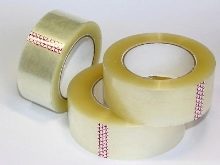Flannel bedding
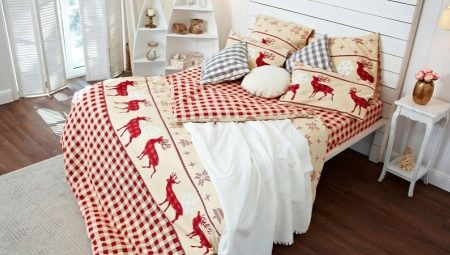
Quiet and healthy sleep is largely ensured by high-quality bedding, with which our body has to come into contact with almost a third of our lives. But how to choose bedding so that they are of high quality, comfortable and inexpensive? In the publication, we will tell you about flannel bedding made from a natural base.

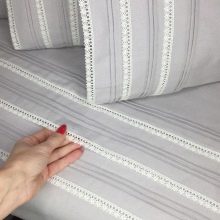
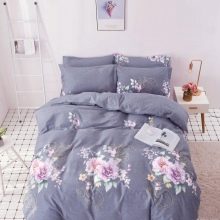
Types of fabric
Flannel is made from woolen and cotton threads by weaving them, so the fabric is considered warm, soft and completely natural, which means it is quite suitable for sewing bed linen. Moreover, such a composition is unpretentious and easy to care for.
Among the advantages of flannel bedding are the following indicators:
- the fabric is environmentally friendly and anti-allergenic, natural substances are also used for staining;
- the bed is durable in terms of strength, despite the fact that with each wash it becomes softer;
- such linen has good hygroscopicity and unpretentious care - it is washed both by hand and in various types of washing machines, it is easy to iron.
Flannel, due to the special interweaving of threads and a small fleece, retains heat well; a bed made of such fabric is very comfortable in the cold season.
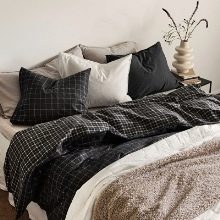


There are no particular drawbacks to this material, but we will nevertheless outline some of the features of flannel sleeping accessories that must be taken into account when buying:
- washing in a mode above 60 degrees shrinks the fabric;
- flannel linen dries a little longer than usual, since there is more moisture in it;
- products made from this fabric wrinkle quickly and can form pills.
However, all these nuances can be avoided with proper use of flannel linen.

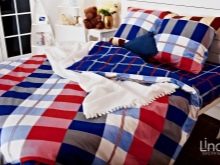
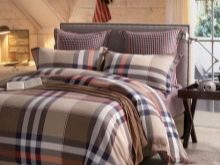
Types of fabric
Flannel is woven from natural warp threads by means of plain weaving. The linen set makes a special fleece of fabric (sometimes even double-sided) warm, which has good air exchange. Based on the density, the following types of flannel are distinguished:
- lightweight fabric with a density of up to 160 g per 1 sq. m (undershirts, diapers and other children's clothing are sewn from it);
- medium density (up to 270 g per 1 sq. m);
- heavy fabric with a density of up to 400 g per 1 sq. m.
Experts consider the flannel of the highest quality, whose square meter does not exceed 130 grams in weight. Bedding sets are sewn, as a rule, from a denser fabric (1 square meter on the scales will show 170 grams).
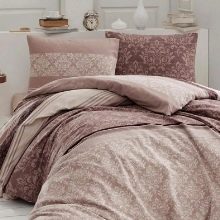
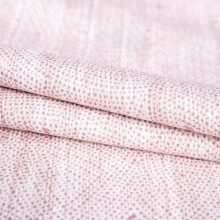
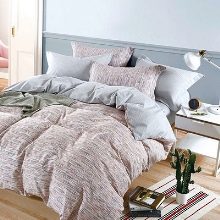
Many people prefer to call flannel a bike, but these are two different fabrics. The bike is more dense, with a noticeable thick pile. The average density of this fabric is 360 g per square meter. While the same figure for flannel is 200 g less, the bike has a double-sided pile, and the flannel is softer and thinner. The species diversity of flannel depends not only on density, but also on coloration. There are other points by which these types of flannel are distinguished:
- shirt (shirt) - may contain synthetic or artificial base;
- negligent - differs in different prints on white and colored backgrounds;
- harsh (unbleached) - a rough base, more used for technical needs;
- bleached - children's clothes are sewn from it;
- printed one-colored - designed for the manufacture of bedding.
Flannel base is easy to paint. All color schemes are used in the design of bed linen. It can be oriental ornamentation, and floral and floral themes, geometry (stripes, cells), abstraction. There are quite a few sets with a winter theme (knitted fabric - imitation, New Year's ornaments, etc.).
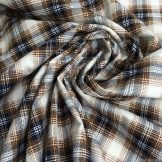


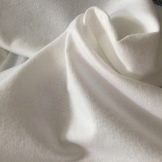
How to choose?
Buying flannel bedding should start with sizing, color and design. One-and-a-half linen is in great demand - a great option for a place where a child sleeps. But for a double bed for adults, choose a euro size or a family type (with two duvet covers). Pay attention to the size of the pillows: some may still have accessories of 70x70 cm, recently, pillowcases 70x50 cm for pillows of the corresponding size have become more and more popular.
Some manufacturers produce flannel bedding sets with two sets of pillowcases for different types of pillows. To make everything look harmonious, give preference to complete sets, rather than individual copies.... Although manufacturers today offer wide assortments and sets, and separately sheets, duvet covers, pillowcases.
On the market today there are bed linen made of hypoallergenic flannel that does not require ironing - a suitable option for those who suffer from allergies and for those who do not like to hold an iron in their hands.

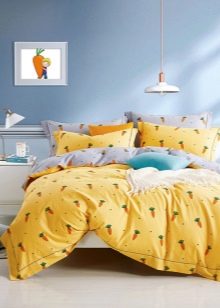
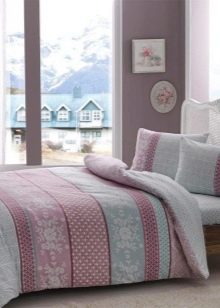
Experts recommend studying the information on the packaging right in the store in order to buy a quality product. Today flannel bed is made by both domestic and foreign suppliers. It is better to give priority to choosing an already reliable manufacturer, and to make a purchase at outlets of trusted sellers. Other recommendations include a number of tips. Choose flannel bedding sets from printed (patterned), plain dyed, or choose bleached fabric. If you prefer a drawing, it is better that it be applied to the fabric on both sides, that is, it should be woven from colored thread. The print on only one side will wash off faster, and the laundry will take on an unsightly look.
Choose quality flannel to keep it soft, lightweight and less pilling. Products made of modern flannel do not require ironing, which significantly saves time for today's housewives. All this should be indicated on the label, a serious manufacturer will honestly write all the information.Kits in questionable packages without labeling should alert consumers. Bypass outlets that sell such goods by the side, otherwise you risk buying a "pig in a poke". In the Russian market, flannel bedding from Turkmenistan stands out, which is packed in bags made of fabric similar to that of which the items of the set are made.
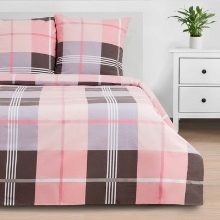

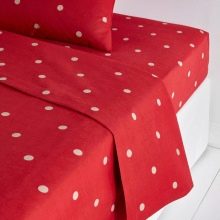
How to care?
Flannel sleeping covers will delight their owners for a long time with a good fresh look, if you follow the rules for their care. Such products are washed only turned inside out, having previously fastened zippers or buttons (if any). This is done so that in the typewriter, when scrolling, the products do not twist back. When washing, the sheet is placed in a duvet cover, the corners of such a puff "pie" are fixed with stitches. For the first time, a new set is washed exclusively in cold water so that the products do not shrink. In the future, the products should not shrink.
Wash only with detergents without bleaching agents. Chlorine will “eat away” the fibers, and the laundry will lose color. Special powders will help preserve color. If there are stains on your laundry, do not rub them, but use a stain remover. When washing your flannel bed, do not get carried away with fabric softener. It is added at least once every 4 scrolls in a typewriter. This is enough for the fabric to retain its softness and tenderness.
Liquid powder will also give softness - it is better not to wash flannel products with a free-flowing product, but to take a liquid base for washing wool. You can also soften the water when washing.
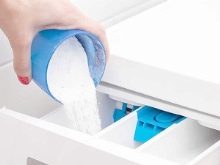
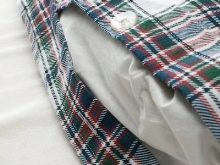
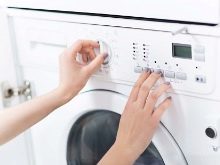
Even with hand washing, do not twist or wring the flannel with your hands, the products will instantly lose their appearance... Such covers are dried in the shade, the fabric fades in the sun. If you decide to iron flannel linen, do it on the wrong side to avoid damaging the fluff when ironing silk or wool. The pile can be restored with steam - it is enough to run the iron at a short distance from the fabric, observing the average temperature regime.
Remove spools from the flannel bed periodically, for this, get a special machine or use ordinary wide tape. Flannel fabric is soft, warm and cozy. When properly cared for, flannel bedding will last a long time and provide a pleasant feeling and comfort. Be sure to update your bedding and purchase such a set for the cold weather.

